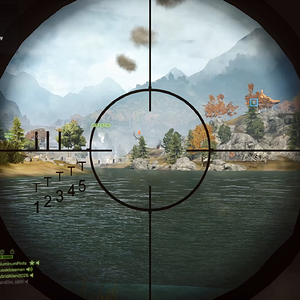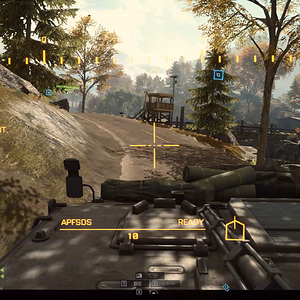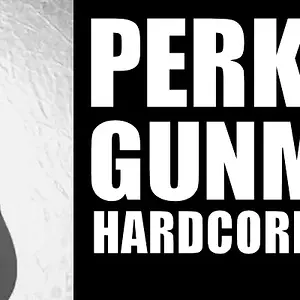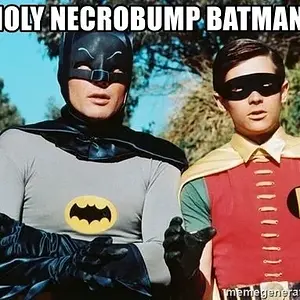K
Kristin Hostetter

For most of my life, I’ve bought into the popular mindset that a perfect green lawn is somehow virtuous. Who doesn’t love the smell of fresh-cut grass? Those pleasing, perfect diagonal stripes? That plush, immaculate emerald carpet that beckons bare feet and promises carefree summers? Although I love and actively seek out nature and wild places in my life, the concept of rewilding my own yard had just never dawned on me. For my essential doses of “wild,” I travel, usually to the mountains.
Even the bushes and blooms in my yard are tame. I grew up and still live on Cape Cod, the land of the blue hydrangea. Here on the Cape we practically worship them. All showy and boisterous, they’re in almost every yard and paintings and photos of them can be found in nearly every art gallery. We have hydrangea festivals and clubs. Tourists come here just to see them, these improbably hued orbs of wonder. There’s no denying the beauty of these non-native shrubs. But that’s the extent of their value. They offer no ecological benefits at all. No pollen or nectar for bees, no food for caterpillars. Blue hydrangeas are all fluff, no substance.

These cotton candy riotous blooms saturate Cape Cod in summer. And while they offer a feast for the eye, they’re famine for the ecosystem. (Photo: Kristin Hostetter)
I never considered the wild possibilities of my own neat and tidy, hydrangea-dotted yard. In fact for years, my husband and I have poured buckets of sweat and money into unwilding it: hydroseeding, overseeding, aerating, irrigating, fertilizing, weed killing, raking, mulching. All in pursuit of a flawless green lawn for our neighbors to ooh and ah over. For us to be proud of.
But our pristine, picture-perfect lawns and clean, well manicured beds, however pleasing to the eye and ego they may be, are ecological dead zones. Dead zones are landscapes that are not performing any of the essential ecological functions that sustain our ability to live on this planet, says Doug Tallamy, entomologist and wildlife ecologist at University of Delaware and author of Nature’s Best Hope: A New Approach to Conservation That Starts in Your Yard and Bringing Nature Home: How You Can Sustain Wildlife With Native Plants.
As a nation, we have done a very good job of surrounding our homes with dead zones.
Why Rewilding Dead Zones Is Essential
“Every person on the planet depends entirely on the quality of earth’s ecosystems,” says Tallamy. “When the life support provided by ecosystems is degraded, so is the quality of life for all species, including our own.”

This pretty rewilded garden on Cape Cod, Massachusetts, features a narrow swath of maintenance-free white clover “lawn” and various native perennials like sun drops, bee balm, false sunflower, and foxglove beard tongue. (Photo: Catherine Weston)
He’s talking about the plants that generate oxygen and sequester carbon. Those plants create the topsoil that grows our food. They also control erosion of that all-important topsoil, especially in the face of the ever-increasing extreme weather events like droughts and floods. He’s also talking about the insects that drive the nutrient cycles on earth, the pollinators that are essential to the continued existence of 80 percent of all plants and 90 percent of all flowering plants. These bugs and pollinators are, in turn, essential to the birds which disperse the seeds of those plants which then feed the mammals. The cycle ramps right up to us.
“Biodiversity is not optional,” says Tallamy. “Every time we force a species to extinction, we are encouraging our own demise.”
Around one million animal and plant species are now threatened with extinction, according to a report from the United Nation, more than ever before in human history. Many of these species are expected to die out within decades. “When we lose enough species we get ecosystem collapse, and then we get societal collapse,” Tallamy told me. “We are not going to survive on this planet if we don’t restore biodiversity.”
The good news is that extinction takes a while, says Tallamy, so if we start sharing our landscapes with other living things now, we will be able to save much of the biodiversity that still exists today.
You might think land stewardship is work best left to conservationists and ecologists. But we all depend on the resources the earth provides us. So shouldn’t we all take some responsibility for it? Tallamy believes that every single one of us has a role to play. It all starts by ending our love affair with lawns.
If We All Rewilded a Little, the Impact Would Be Huge
Lawns comprise 44 million acres of land in the U.S. That’s bigger than New England. For context, all of our national parks together measure less than 20 million acres.

The opposite of rewilding: this manicured grass lawn requires lots of water, chemicals, and mowing, and gives nothing back to nature. It’s a big green dead zone. (Photo: Doug Tallamy)
When Tallamy realized this, he decided to try to close that gap and fill in the ecological blanks on our map. Homegrown National Park (HNP) is a nonprofit organization launched in 2019. The goal: to convince Americans to rewild just a little bit of their beloved lawns into habitat for insects, birds, moths, and the native plants that support them.
“If we could rewild half of our existing lawns, we would create 20 million acres of valuable, viable habitat linking our existing parks and preserves,” says Tallamy. “We’d be transforming 20 million acres of deadscape that’s helping to cause climate change into 20 million acres that is helping mitigate it.”

The interactive map on Homegrown National Park shows active users of the tool as a percentage of state population. There are five tiers—darker shades of green states indicate the most participation in HNP’s rewilding movement. (Photo: Homegrown National Park)
Homegrown National Parks website’s star feature is an interactive map where anyone can register their intent to rewild a bit of their land–to plant a native tree or pollinator (even just one in a patio pot!), remove an invasive species, or, yes, reduce their lawn size. It’s not as daunting as it sounds. Lawn reduction can be as simple as digging in a native plant bed under an established tree or even just re-edging your existing beds into bigger ones.
The HNP map tracks the amount of rewilded U.S. acreage, the number of planted areas, and the number of users state by state. As I write this, HNP says the U.S has 96,593 acres of Homegrown National Park land (so we have a long road ahead to get to 20 million). States are color coded into five shades of green, according to their rate of rewilding. “I want the whole country to be dark green, which will require small actions by many people,” says Tallamy.

This home has a gorgeous, mossy lawn that is both zero-maintenance and ecologically productive. (Photo: Kristin Hostetter)
It doesn’t sound that hard to me. After all, my dead zone lawn requires a ton of maintenance (and money). That’s because growing a pristine green lawn is a literal battle with nature. “Our lawns are cool-season European grass species,” Tallamy told me. “They grow in the spring and fall but they want to go dormant in the summer. So what do we do? We douse them with fertilizer and water to keep them on life support through the hot months. We keep our lawns alive, even though they want to die off.” Alternatives to those needy European grasses—like clover and moss—can be beautiful, zero maintenance, and ecologically rich.
Let’s be clear: Tallamy doesn’t expect you to decimate and rewild your entire lawn. He believes that although we have way too much of it, well manicured grassy spaces have their place. “Grass is great for pathways,” he says. “And small, well maintained swaths of lawn signal ‘cues of care’ to our neighbors.”
Cues of care are important in lots of American neighborhoods. But remember, that house someone might think of as an eyesore—the one surrounded by hip-high weeds and layers of rotting leaves—is doing more to support biodiversity than all the perfectly pruned lawns on the street combined. Beauty is sometimes in the eye of the beholder.
An Easy, 4-Step Action Plan
I’m a newbie gardener. I got hooked during Covid and it has turned into a full-blown passion for growing my own food, composting, canning what I can’t eat, and so many other fun spin-off hobbies that support my personal sustainability goals.
After reading Nature’s Best Hope, I can’t wait to start rewilding my yard. Tallamy gave me a simple, four-step road map and assured me that I don’t have to tackle it all at once. I just registered my intent on the HNP map. I hope you’ll join me.
- Shrink your lawn and rewild with something native. I already have a gorgeous, mature native oak in my yard, but the lawn bumps right up against it. This summer, I’ll be carving out a big bed under its canopy and filling it with native perennial plants that will attract insects, moths, and birds to my yard like goldenrod, butterfly weed, an lupine. (Find natives that are right for you here.)
- Plant a “keystone” plant. Keystones are the most productive plants that support the most species. Even just one makes a difference, even in a pot! Search National Wildlife Federation’s database for keystones by region. I’ll be adding some solidago, blue wood aster, and black-eyed Susans to my yard this summer. And likely digging up a hydrangea or two.
- Turn off outdoor lights. “Light pollution is an ecological disaster nobody thinks about,” says Tallamy. “Lights kill insects and we turn them on for no reason, just out of habit.” He suggests installing a motion detector and swapping white outdoor bulbs for yellow bug lights. White bulbs entice the bugs and distract them from doing what they need to do at night, which is buzz around and feed and reproduce and stay healthy and strong.
- Leave your leaves. Raking leaves is a terrible habit, says Tallamy. It deprives the soil and the trees that made those leaves from the nutrients they need. Sweeping the ground clean also exposes it so it dries out, hardens up, and kills the soil community.
Rewilding Tips for Apartment Dwellers and Cityfolk
Even if you live in a city apartment or a condo with no yard, you can still have an impact on the rewilding movement. Here are Tallamy’s top three tips for folks who are not land owners:
- Start container gardening. If you have a balcony or patio, plant a keystone native in a container and you’ll become an important pitstop for pollinators and migrating birds.
- Look for a community garden in your area. Maybe you’re lucky and there is a shared bed in your apartment’s courtyard that you could adopt, or maybe a community organization has been tending plot of land a few blocks down the street. Again, opt for a native keystones. Get your neighbors in on the action and spread the word.
- Volunteer at a park or preserve. The Nature Conservancy keeps a good searchable database of nature preserves around the country. Many of them are understaffed and underfunded and would love the help, says Tallamy, so call and ask!
Doing right by the planet can make you happier, healthier, and—yes—wealthier. Outside’s head of sustainability, Kristin Hostetter, explores small lifestyle tweaks that can make a big impact. Write to her at [email protected].
The post The Perfect Green Lawn Is the American Dream. But It Shouldn’t Be. appeared first on Outside Online.
Continue reading...







